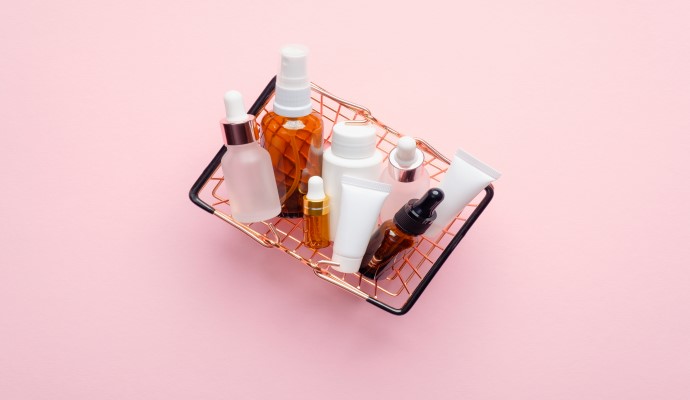Consumers Eye Primary Care Transition to Retail Clinics, Pharmacies
Patients are hungry to access primary care in a retail clinic or pharmacy, with their trust in advanced practice providers going up, survey data shows.

Source: Getty Images
- In five years, primary care access might not be defined by walking into a traditional brick-and-mortar clinic—not if consumers have anything to do about it, according to a new report commissioned by Wolters Kluwer Health. Instead, primary care access will rest with retail clinics and pharmacies, 61 percent of survey respondents said.
This comes as the medical industry shifts toward more consumer-centered care. This latest survey of around 1,000 adult patients found that consumers want convenient, affordable, and personalized healthcare, and that will mean utilizing alternative care sites like retail clinics and pharmacies.
“Americans made it clear: It’s time for healthcare to get ready for big changes,” Peter Bonis, MD, the chief medical officer at Wolters Kluwer, Health, said in a statement. “Gen Z and Millennials are thinking differently about the who and where of healthcare and medication prescribing, compared to Boomers and Gen Xers.”
Around two-thirds of all patients said they expect most of their primary care to happen in the retail clinic or pharmacy setting within the next five years, with Millennials being the most likely to say as much (70 percent).
Baby Boomers and older were more reticent to say retail and pharmacy clinics will grow in prominence, with only 43 percent saying so. That could underscore generational differences in patient healthcare needs and preferences, with older patients preferring more traditional models of healthcare.
READ MORE: Retail Health Clinics Are Key on the Path to Health Equity
And it won’t just be doctors delivering that primary care; consumer respondents gave the seal of approval to advanced practice providers, like nurse practitioners (NPs) and physician assistants (PAs), to deliver care. Around half of patients trust pharmacists (56 percent), NPs (55 percent), and PAs (50 percent) to staff retail clinics and deliver primary care. These patients said accessing care from APPs could help yield cost savings, which is important to healthcare consumers.
Women are 20 percent more likely to trust NPs and 9 percent more likely to trust PAs than men, the survey added.
Meanwhile, 72 percent of patients said they trust their pharmacist to prescribe medications, something not every pharmacist can do depending upon the state in which they practice. That trust is more common in younger patients, although a sizeable proportion (58 percent) of Baby Boomers and older also said they trust pharmacists to prescribe medications.
Even still, consumers said they do have some concerns about their primary care shifting to the retail or pharmacy clinic setting. For one thing, consumers are worried about the potential for staff burnout, with around six in 10 Gen Zers and Millennials saying they are concerned about understaffed retail clinics.
Patient safety concerns also abound, with 50 percent being worried they will get the wrong medication dosage. Another 50 percent are anxious they will get the wrong medication, 65 percent are worried they won’t know about drug contraindications, and 47 percent are concerned they will get the wrong instructions.
Patient education about medications and their side effects is a key pharmacist responsibility, consumers agreed, with a whopping 97 percent of respondents saying pharmacists should be telling patients about drug safety and effectiveness.
In addition to patient safety issues, consumer respondents said cost, especially in this current landscape of inflation, is of note. Sixty-four percent said the cost of their medications has risen in the past few years, with around a third saying their prescription costs have jumped between 6 and 10 percent.
That increase is in line with the current rate of inflation, the researchers pointed out.
Consequently, medication adherence is taking a hit. About four in 10 (44 percent) of respondents said they are not filling a prescription because of the cost. Broken out by insurance status, 56 percent of uninsured patients are skipping prescriptions due to cost, while 42 percent of insured patients are doing the same.
Patients are open to discussing the high cost of medications with a healthcare professional, although doctors (56 percent) are more popular for these conversations than pharmacists (43 percent). Patients are also open to using mail delivery for their medications (77 percent) to save costs.
In addition, patients want more personalized treatment options, which could save costs down the road by ensuring patients access the right medication on the first try. Four in five patients said they’d complete genomic testing if they could get more personalized treatments, while 88 percent said there’s a cost incentive there for their insurance providers to offer genomic testing.
As the cost of healthcare continues to rise amid an economy defined by inflation, industry leaders will need to forge ahead with new strategies to deliver patient-centered care at a better price point, Bonis said.
“From hospitals to doctors’ offices, from pharmacies to pharma and beyond, healthcare must move to more affordable and accessible primary care models, adopt innovations that help deliver more personalized care, and address persistent safety and cost concerns that consumers have about their medications,” he concluded.
